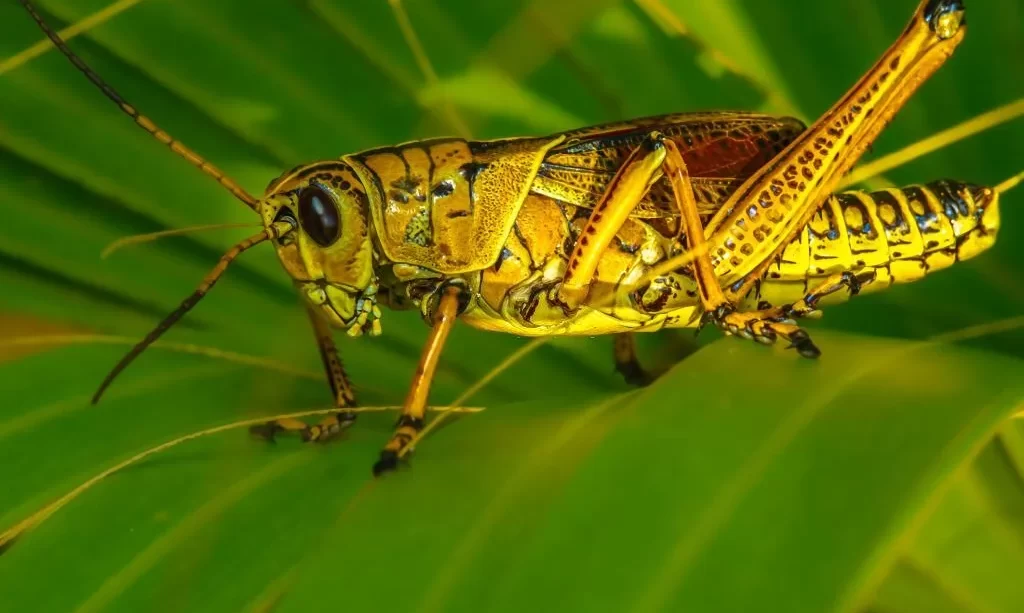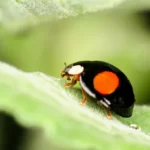Lubber grasshoppers, with their striking appearance and often conspicuous presence, are a subject of interest and sometimes concern for many individuals. These large, colorful insects are known for their distinct appearance and distinctive behaviors, making them a noticeable feature in various landscapes. However, the question of whether or not to kill lubber grasshoppers is a complex one that involves ecological, ethical, and practical considerations. In this guide, we will explore the world of lubber grasshoppers and delve into the factors to consider when deciding how to manage their presence. From understanding their biology to evaluating the need for control, we will provide valuable insights to help you make informed decisions.
Lubber Grasshoppers
Lubber grasshoppers, scientifically classified under the Romaleidae family, are a unique species of grasshopper known for their large size and vibrant coloration. These insects often have a robust body with contrasting colors, making them easy to spot. They are primarily found in the southeastern United States, and their preferred habitats include grasslands, wetlands, and open spaces with an abundance of vegetation.
Lubber grasshoppers are primarily herbivores, feeding on various plants, which can include agricultural crops, ornamental plants, and native vegetation. Their diet choices can lead to concerns when their populations grow and they pose a threat to crops and gardens. However, it’s essential to understand their behavior, life cycle, and ecological role before deciding on any control measures. By gaining insight into the world of lubber grasshoppers, you can make more informed and responsible choices regarding their management.
The Case for Control
The decision to control lubber grasshoppers is often influenced by the potential harm they can cause to plants, crops, and gardens. Lubber grasshoppers are voracious herbivores, and when their populations surge, they can defoliate plants, leaving behind damaged vegetation and sometimes economic losses for farmers and gardeners. Their impact can be particularly concerning in agricultural settings, where they may consume valuable crops.
In cases where lubber grasshoppers threaten the health and livelihood of plants, there is a valid case for implementing control measures. This can involve the use of pesticides, physical removal, or other control methods to reduce their numbers and protect the affected vegetation. However, it’s essential to consider the broader ecological context and ethical aspects of these decisions.
Ethical Considerations
The question of whether to kill lubber grasshoppers also involves ethical considerations. Grasshoppers, like all living creatures, have a place in the ecosystem and play roles that can be beneficial in various ways. They are a source of food for birds and other predators and contribute to nutrient cycling in ecosystems.
When deciding on control measures for lubber grasshoppers, it’s crucial to strike a balance between protecting your plants and being responsible stewards of the environment. Employing non-lethal or less harmful methods of control, such as physical barriers or targeted interventions, can align with ethical considerations and minimize unintended harm to other species.
Adhering to the principles of integrated pest management (IPM) is a practical way to address pest issues while considering the broader ecological and ethical impacts. IPM seeks to manage pests while minimizing environmental and health risks, making it a more responsible approach in many cases.
By contemplating both the practical need for control and the ethical aspects of managing lubber grasshoppers, individuals can make more informed and balanced decisions that address the immediate concerns while respecting the intricate web of life in the ecosystem.
Practical Control Methods
When considering control measures for lubber grasshoppers, it’s essential to explore practical methods that can help manage their presence while minimizing harm to the environment. Here are some practical control methods to consider:
- Handpicking: Physically removing lubber grasshoppers from affected plants or areas is a practical and non-lethal method. Wearing gloves, gently pick them off and relocate them to a more suitable habitat.
- Barrier Methods: Installing physical barriers, such as row covers or mesh, can prevent lubber grasshoppers from accessing vulnerable plants or crops. This is an effective way to protect specific areas without causing harm to the insects.
- Beneficial Predators: Attract or release natural predators of lubber grasshoppers, such as birds, frogs, and certain insects. Encouraging a diverse ecosystem can help maintain a balance and reduce grasshopper populations.
- Neem Oil: Neem oil is a natural insect repellent that can be applied to plants to deter lubber grasshoppers from feeding on them. It is considered a less harmful alternative to chemical pesticides.
- Biological Controls: Investigate the use of biological control agents, such as parasitoid wasps or entomopathogenic nematodes, which can target lubber grasshoppers specifically.
- Plant Selection: Choosing plant species that are less attractive to lubber grasshoppers can be a preventive measure. Research which plants they tend to avoid and consider incorporating these into your garden or landscape.
It’s important to assess the specific situation and the extent of the lubber grasshopper infestation when choosing a control method. In some cases, a combination of these methods may be most effective. By opting for practical and less harmful control measures, you can manage lubber grasshoppers while minimizing negative impacts on the environment.
Balancing Act
The decision to manage lubber grasshoppers involves a delicate balancing act. On one hand, the potential harm they can cause to plants and crops may necessitate control measures to protect livelihoods and investments. On the other hand, we must consider the ethical responsibility of coexisting with nature and preserving the ecological balance.
Striking this balance means finding ways to mitigate the immediate threats posed by lubber grasshoppers while minimizing harm to the broader ecosystem. Overreliance on chemical pesticides, for instance, may harm beneficial insects, birds, and other species that rely on lubber grasshoppers as a food source.
By opting for practical, non-lethal methods and implementing integrated pest management principles, individuals can navigate this balancing act responsibly. These approaches allow for effective management of lubber grasshopper populations while preserving the ecological integrity of the environment.
Conclusion
In the end, the decision of whether to kill lubber grasshoppers should be based on a thoughtful evaluation of the specific situation, weighing the practical need for control against ethical and ecological considerations. It is possible to find middle ground by utilizing non-lethal control methods, embracing ecological diversity, and practicing responsible pest management.
Remember that the natural world is a complex web of interdependencies, and a responsible approach to managing lubber grasshoppers can help maintain that delicate balance. By taking a holistic view of the situation, we can reduce the potential harm these insects may cause while respecting the larger ecosystem that sustains us all.



